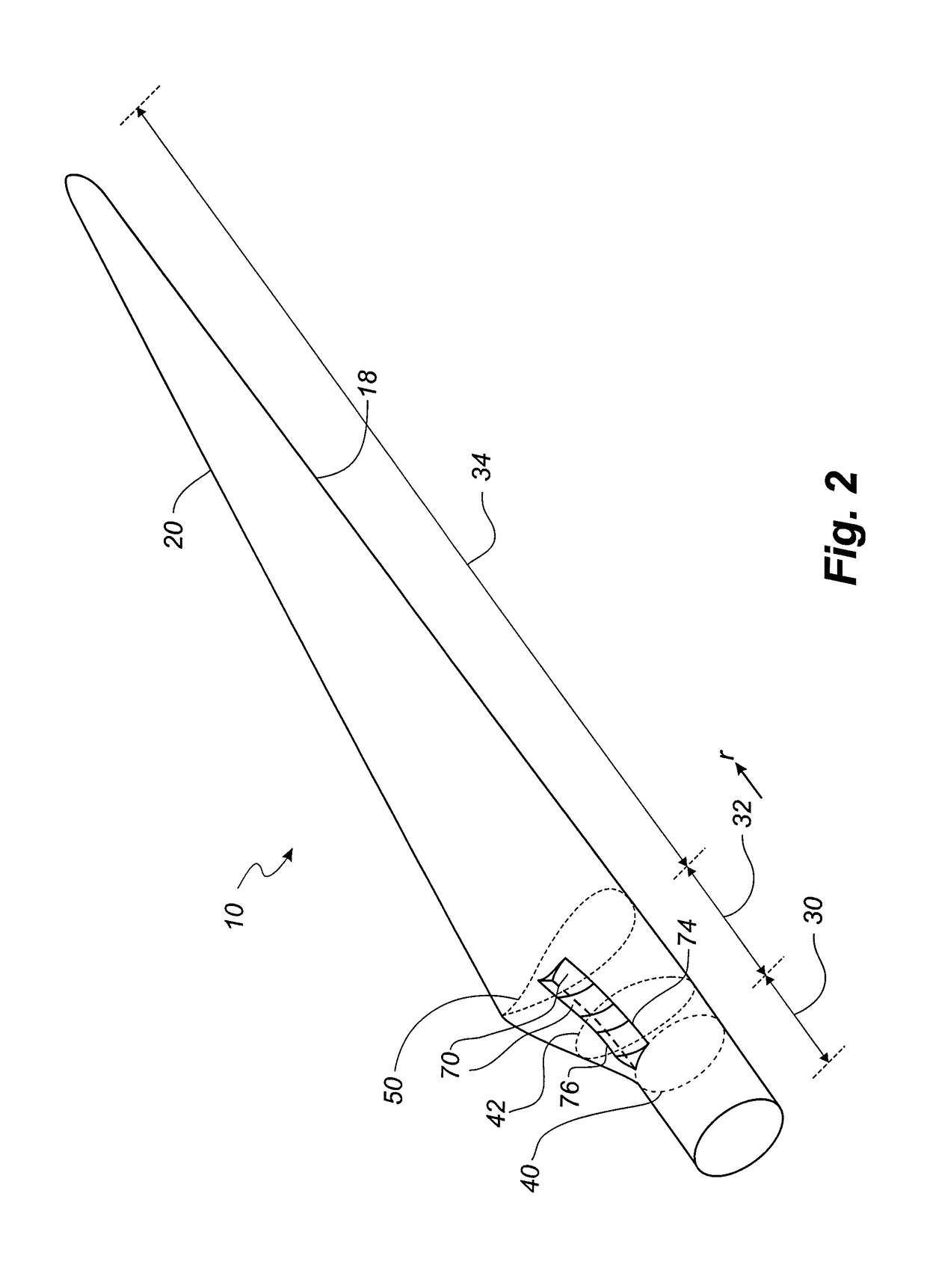Wind turbine blade with plurality of longitudinally extending flow guiding device parts
a technology of longitudinal extension and wind turbine blade, which is applied in the direction of wind turbines, engine components, wind energy generation, etc., can solve the problems of reducing the load of the blade, increasing the financial gain, and increasing the load, so as to achieve easy and cheap manufacturing and huge structural advantages
- Summary
- Abstract
- Description
- Claims
- Application Information
AI Technical Summary
Benefits of technology
Problems solved by technology
Method used
Image
Examples
first embodiment
[0098]FIG. 2 shows a schematic view of a wind turbine blade 10 according to the invention. The wind turbine blade 10 has the shape of a conventional wind turbine blade and comprises a root region 30 closest to the hub, a profiled or an airfoil region 34 furthest away from the hub and a transition region 32 between the root region 30 and the airfoil region 34. The blade 10 comprises a leading edge 18 facing the direction of rotation of the blade 10, when the blade is mounted on the hub, and a trailing edge 20 facing the opposite direction of the leading edge 18.
[0099]The airfoil region 34 (also called the profiled region) has an ideal or almost ideal blade shape with respect to generating lift, whereas the root region 30 due to structural considerations has a substantially circular or elliptical cross-section, which for instance makes it easier and safer to mount the blade 10 to the hub. The diameter (or the chord) of the root region 30 is typically constant along the entire root are...
second embodiment
[0106]FIG. 19 shows a flow guiding device part 170′ according to the invention, wherein like numerals refer to like parts of the embodiment shown in FIG. 18. Therefore, only the difference between the two embodiments is described. In this embodiment, the plate-shaped element 197 is angled forward so that the plate-shaped element 197 forms a first angle φ with the base 190. Thus, the front surface 198 also faces slightly downwards towards the base 190 and the surface of the blade 10. When the front surface 198 during normal operation of the wind turbine is impacted by an oncoming airstream, an air pocket is formed in front of the front surface, which increases the pressure in front of the flow guiding device, and which guides the airflow around the flow guiding device 170′. Thus, an increased pressure is built up both in front of and behind the flow guiding device 170′. Thereby, the lift is increased along a large part of the blade section. The first angle φ is advantageously at leas...
third embodiment
[0119]FIG. 9 shows a schematic view of flow guiding device parts 370 according to the invention, seen from the side. In this embodiment, the flow guiding device parts 370 are partially overlapping in the longitudinal direction. Accordingly, one end of one flow guiding device part extends beyond a second end of a second flow guiding device part. The ends may be slightly angled as shown in the Figure.
[0120]FIG. 10 shows a schematic view of the third embodiment of flow guiding device parts 370 according to the invention, seen from the top. It can be seen the flow guiding device parts 370 are staggered in the longitudinal direction. The back surface of one flow guiding device part may abut the front surface of a second flow guiding device part, or there may be a small gap in the transverse direction of the blade.
PUM
 Login to View More
Login to View More Abstract
Description
Claims
Application Information
 Login to View More
Login to View More - R&D
- Intellectual Property
- Life Sciences
- Materials
- Tech Scout
- Unparalleled Data Quality
- Higher Quality Content
- 60% Fewer Hallucinations
Browse by: Latest US Patents, China's latest patents, Technical Efficacy Thesaurus, Application Domain, Technology Topic, Popular Technical Reports.
© 2025 PatSnap. All rights reserved.Legal|Privacy policy|Modern Slavery Act Transparency Statement|Sitemap|About US| Contact US: help@patsnap.com



